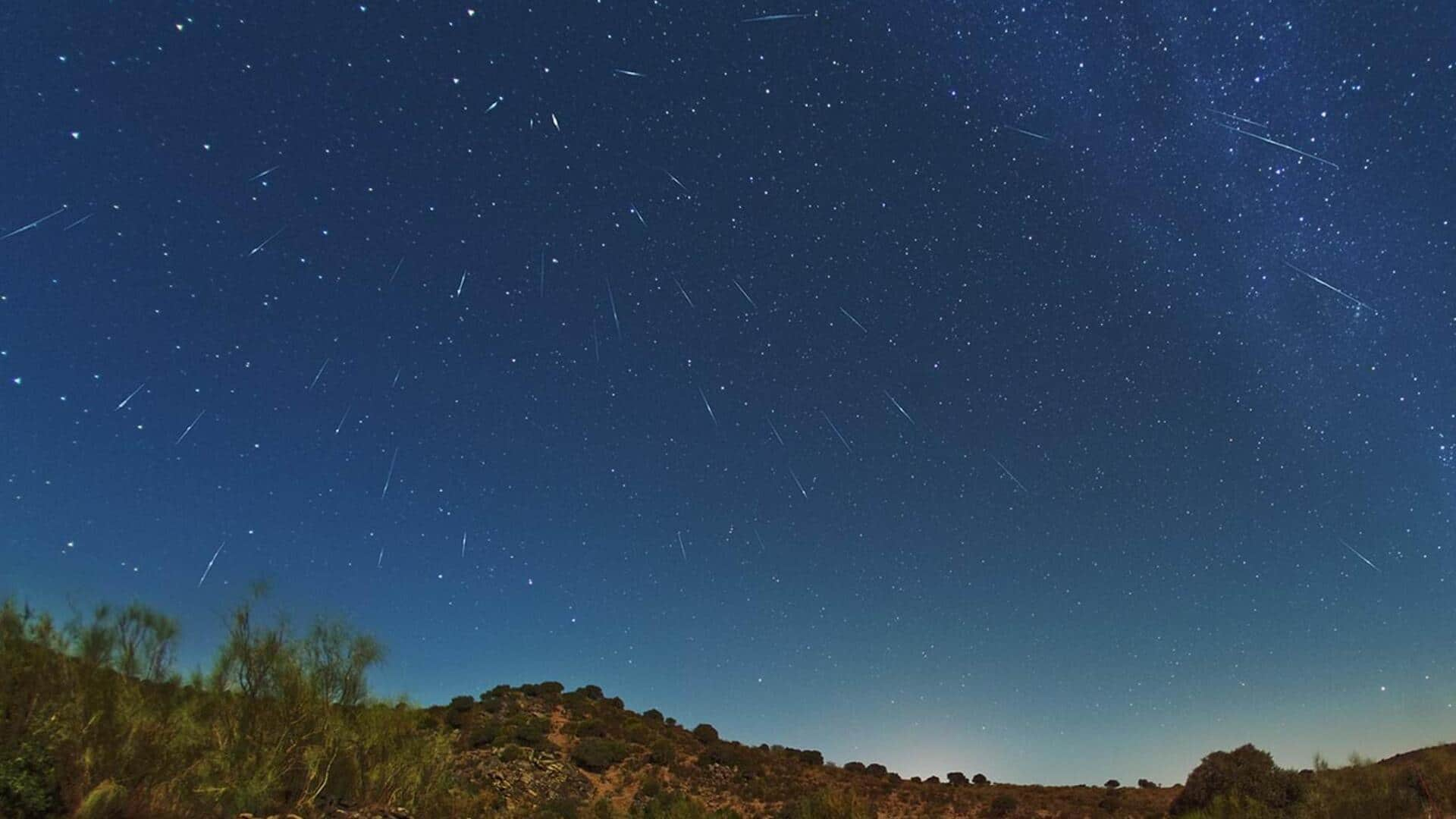
Draconid meteor shower peaks this weekend: How to watch
What's the story
The Draconid meteor shower is set to light up the night sky from today. The meteor shower will be visible up to October 10, with its peak expected around October 8 and 9.
This year, stargazers can look forward to favorable viewing conditions, thanks to the Moon being only 19% illuminated.
You can check if the meteor shower is visible from your location using the tracker on timeanddate.
Comet
The reason behind the meteor shower
The Draconid meteor shower is caused by debris from Comet P/Giacobini-Zinner.
It's also sometimes called the 'Giacobinids' in honor of French astronomer Michel Giacobini, who first spotted the comet in December 1900.
This comet measures just 2km in diameter and takes roughly 6.6 years to orbit the Sun. As it returns to the inner solar system, the comet's nucleus sheds ice and rock into space, leaving a trail of debris that causes the meteor shower as Earth passes through it.
Details
Draconids have led to impressive meteor showers in 1933, 1946
Named after the constellation Draco, the Draconids appear to originate from this constellation in the sky.
In the past, the Draconids have produced some of the most impressive meteor showers of the 20th century, particularly in 1933 and 1946. At that time, reportedly thousands of meteors were spotted.
Such meteor outbursts seem "to occur only when the Earth passes just inside Comet Giacobini-Zinner's orbit shortly after the comet itself has gone by," per Space.com.
What Next?
How to watch the Draconid meteor shower
The optimal time to look for the Draconid meteor shower is in the late evening during the shower's peak between October 8 and 9 when the Draco constellation is highest in the sky.
To catch the best view of the Draconid meteors, find the darkest possible location and give your eyes about 30 minutes to adjust to the dark.
You don't need special equipment like telescopes or binoculars; just focus on taking in as much sky as possible.